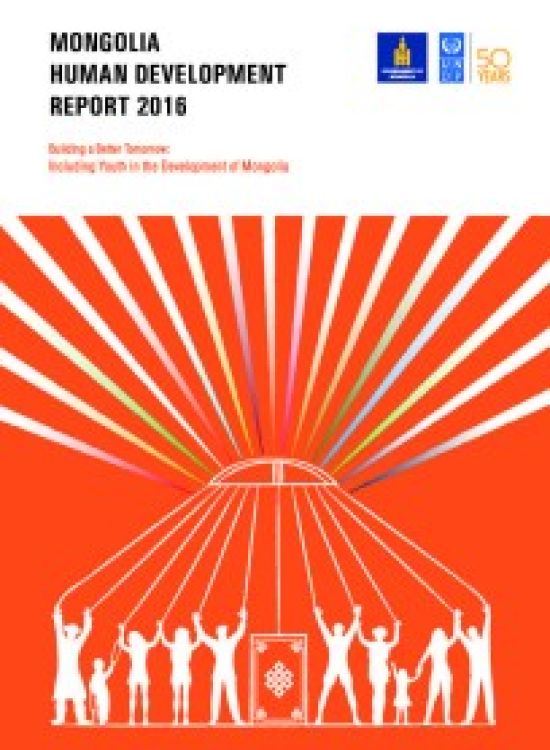Mongolia Human Development Report 2016: Building a Better Tomorrow: Including Youth in the Development of Mongolia
Mongolia Human Development Report 2016: Building a Better Tomorrow: Including Youth in the Development of Mongolia

Download Report by Language
Document
Citation
UNDP (United Nations Development Programme). 2016. Mongolia Human Development Report 2016: Building a Better Tomorrow: Including Youth in the Development of Mongolia: Mongolia Human Development Report 2016: Building a Better Tomorrow: Including Youth in the Development of Mongolia. New York.
Mongolia Human Development Report 2016: Building a Better Tomorrow: Including Youth in the Development of Mongolia
Mongolia Human Development Report 2016: Building a Better Tomorrow: Including Youth in the Development of Mongolia
Posted on: January 01, 2016
This National Human Development Report (NHDR) of Mongolia -the sixth in the se-ries – focuses on youth. Through the me-dium of the human development approach, it analyses the opportunities, choices and challenges facing young people in Mongo-lia today. This approach places people at the centre of development. It concentrates on enlarging people’s opportunities and choic-es to live long, healthy and productive lives.
A key overriding message of this report is the contribution of youth to building a better tomorrow in Mongolia. This contri-bution depends largely on the capabilities and opportunities open to youth in making choices. Young people are the shapers and leaders of our global future.1 Like young people elsewhere, Mongolia’s youth pos-sess the potential to become the drivers of change and play a significant role in the na-tion’s future. They are the first generation in the country to have spent most of their lives under a democratic form of government. This has been crucial to their outlook and their experience.
At more than one million, youth aged 15–34 years represent the largest demographic group in Mongolia, accounting for 34.9 percent of the resident population in 2015 and a significant share of the people of work-ing age. Even by 2040, when the country’s population is expected to reach 4 million, an estimated 29 percent will be in the 15–34 age-group.
The annual growth in gross domestic prod-uct (GDP) of Mongolia increased to 6.7 percent in 2005–2010 and then accelerat-ed to 12.2 percent in 2010–2014. However, according to the World Bank, the growth in GDP is projected to have slowed to 2.3 percent in 2015 and to 0.8 percent in 2016 because of a sharp contraction in mining production and despite a gradual recovery in non-mining sectors.2 Nearly one person in five is living below the poverty line, and the regional disparities within the country are visible. Nonetheless, Mongolia has made substantial progress in the human develop-ment index (HDI) at the national level and is placed in the high human development category. Over the past two decades, Mon-golia has evolved into “a vibrant multiparty democracy with a booming economy”, and it is now “at the threshold of a major trans-formation driven by the exploitation of its vast mineral resources”.
To what extent are youth in Mongolia ben-efiting from the economic growth, the pro-gress in social development and the other opportunities? What challenges are they facing in making the choice to “achieve outcomes that they value and have rea-son to value”? What policies are in place to address these challenges? What can be done by stakeholders to include youth in the country’s growth and development? These are some of the questions motivat-ing this NHDR, which analyses the issues around four pillars of human development important to youth: developing capabilities, expanding employment opportunities, empowering youth, and enhancing human security.